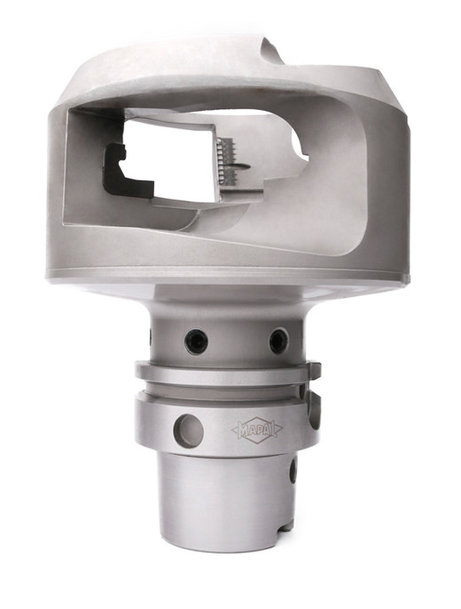www.industryemea.com
22
'20
Written on Modified on
With additive manufacturing to more productivity
If the weight of PCD tools is reduced, as a rule significantly higher cutting data can be used. Along with design freedom, the possibility of weight optimisation is one of the crucial advantages offered by 3D printing. Due to the specially developed structures inside the tool, which cannot be manufactured conventionally, the weight can be reduced significantly.

New bell tool with low weight, long tool life and best cutting data
An example of how MAPAL uses this advantage of 3D printing in practice is the new bell tools with brazed PCD inserts. Bell tools are used for the external machining of hose connections, among other applications. These connections, for example on turbochargers, must satisfy complex contour requirements. Manufacturing must be correspondingly precise. Existing processes are also subject to continuous improvement so that manufacturing is cost-effective and reliable in series production.
MAPAL has therefore optimised the existing, conventionally manufactured bell tool. Using the selective laser melting process, the inside of the tool has been modified – instead of solid material there is now a specially designed honeycomb structure. As a consequence, the tool is 30 percent lighter and the tool life is increased by approx. 40 percent due to the damping effect. It is therefore possible to machine faster; the machining quality remains at the same high level.
In total the machining time has been reduced by 50 percent. Furthermore, the cooling channel design has also been optimised. The new bell tool is of hybrid design. Using selective laser melting, the new tool geometry is printed on a highly precise tool body with a HSK-63 connection. The additively manufactured part is subsequently machined conventionally. Then the PCD inserts are brazed in place and cut to shape using a laser.
www.mapal.com

